índice
Introduction
Tradescantia Fluminensis, popularly known as “Wandering Jew”, is an ornamental plant with lush, cascading foliage. Originally from Brazil, this tradescantia is appreciated for its easy propagation, making it a popular choice for gardens, hanging baskets and interiors. Its lanceolate leaves, often marked by shades of green, pink and purple, give it a unique aesthetic, while its hardy nature makes it an excellent choice for gardening enthusiasts of all levels.
Meaning of Wandering Jew (Tradescantia Fluminensis)
In addition to its beauty, Tradescantia Fluminensis carries symbolic meanings. Its name “Wandering Jew” refers to the legend of a Jewish man condemned to wander forever, a metaphor that can be associated with the plant’s ability to spread and thrive in diverse environments. This connection between the name and the nature of the plant adds an intriguing layer to its presence in gardens, providing not only a visual delight, but also a story rich in symbolism.
| Common Name | Wandering Jew |
|---|---|
| Botanical Name | Tradescantia Fluminensis |
| Family | Commelinaceae |
| Plant Type | Herbaceous perennial |
| Size Adult | Up to 30 cm tall |
| Sun exposure | Half shade to full sun |
| Soil type | Well-drained, rich in organic matter |
| soil pH | Neutral to slightly acidic |
| Flowering Season | Spring and summer |
| Flower color | White, pink, purple |
| Native Area | Brazil |
| Toxicity | Slightly toxic to domestic animals |
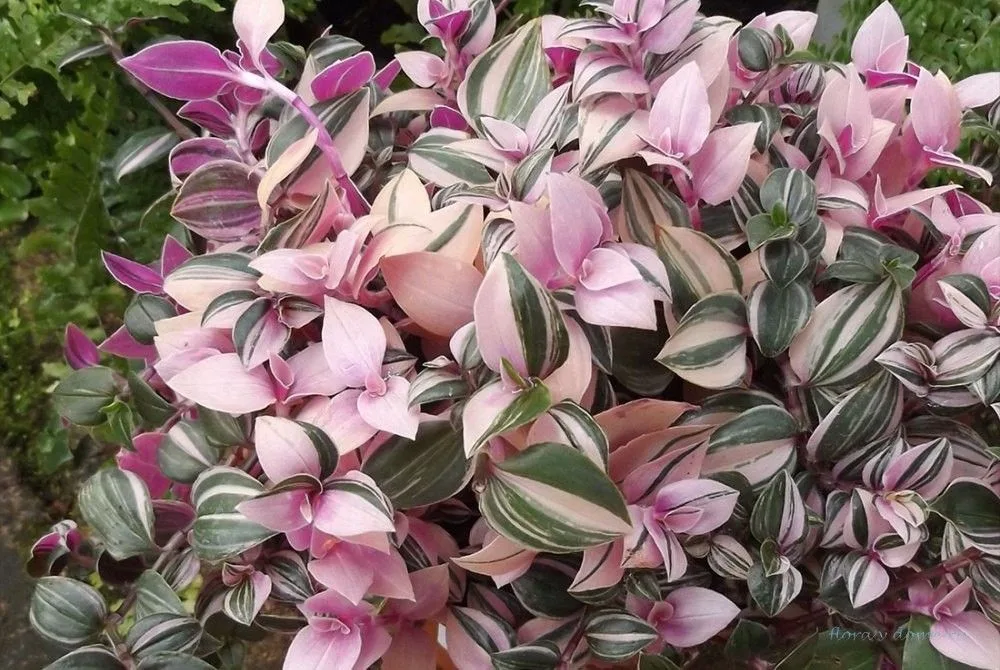
How to care for Wandering Jew
Wandering Jew, known for its lush foliage, requires specific care to thrive. Follow these guidelines to ensure your plant’s well-being:
Light
Wandering Jew appreciates abundant light, but avoid direct exposure to strong sunlight. Places with indirect or filtered light are ideal, providing the perfect balance for its development.
Soil
Use well-drained soil rich in organic matter. The ideal mix includes a substrate for indoor or universal plants, adding perlite or sand to improve drainage.
Water
Keep the soil slightly moist, watering when the top layer is dry. Avoid waterlogging, as the accumulation of water in the roots can cause problems.
Temperature and humidity
Wandering Jew adapts well to temperatures between 15°C and 25°C. As for humidity, it tolerates different levels, but more humid environments favor its growth.
Fertilizing
Fertilize the plant every 4 to 6 weeks during spring and summer. Choose a balanced fertilizer, diluted according to the manufacturer’s instructions, to promote healthy growth.
By following these guidelines, you will create an environment conducive to the exuberant beauty of Wandering Jew and enjoy a vibrant plant full of life.
Types of Wandering Jew
Discover the many variations of Wandering Jew, each adding a unique touch to the world of ornamental plants:
- Wandering Jew ‘Tricolor’:
- Stands out for its green, pink and white leaves, adding a touch of vivacity to any environment.
- Wandering Jew ‘Quadricolor’:
- Features a broader color palette, incorporating nuances of green, pink, white and purple in the leaves.
- Wandering Jew ‘Albovittata’:
- Characterized by white stripes along the leaves, creating a striated and elegant effect.
- Wandering Jew ‘Albo-marginata’:
- The white edges on the leaves give a distinctive outline, providing an attractive look.
- Wandering Jew ‘Aurea’:
- With predominantly golden leaves, it adds a special shine to any arrangement or garden.
- Wandering Jew ‘Variegata’:
- It has variations in green and white, giving it a delicate and balanced appearance.
Exploring these different varieties of Wandering Jew offers not only a wide range of aesthetic options, but also the opportunity to create unique compositions in your green spaces.
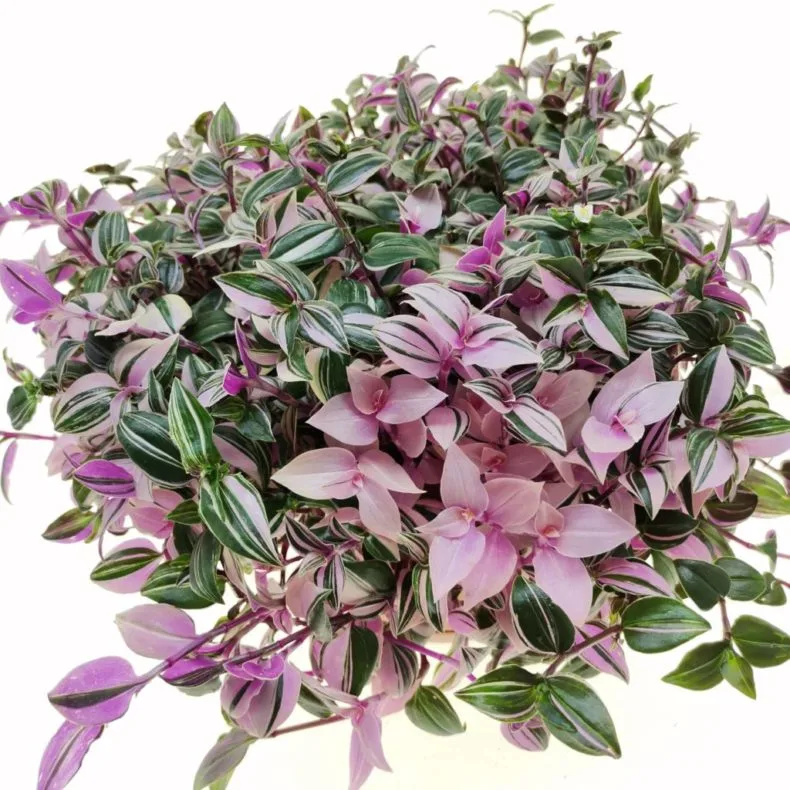
How to make Wandering Jew cuttings
Propagating Wandering Jew is an affordable and rewarding process. Follow these simple steps:
- Choice of Material: Opt for healthy, non-flowering tips to ensure successful propagation.
- Precise Cutting: Use sharp scissors to cut 7 to 10 cm segments, making sure to include knots along the cut.
- Removing Lower Leaves: Remove the leaves from the lower portion of the cutting, leaving only a few at the top.
- Planting in Moist Substrate: Plant the cuttings in a moist substrate, burying them slightly. Maintaining a humid environment favors rooting.
How to plant Wandering Jew
When planting your Wandering Jew cuttings, follow these guidelines:
- Site selection: Choose areas with indirect light, avoiding intense direct sunlight.
- Soil preparation: Make sure the soil is well-drained and rich in organic matter, providing ideal growing conditions.
- Adequate spacing: Plant the seedlings 20 to 30 cm apart to allow for healthy growth.
- Moderate Watering: Keep the soil slightly moist, avoiding excess water that can lead to root problems.
By following these steps, you will not only successfully propagate Wandering Jew, but also ensure effective planting for the lush development of this charming plant.
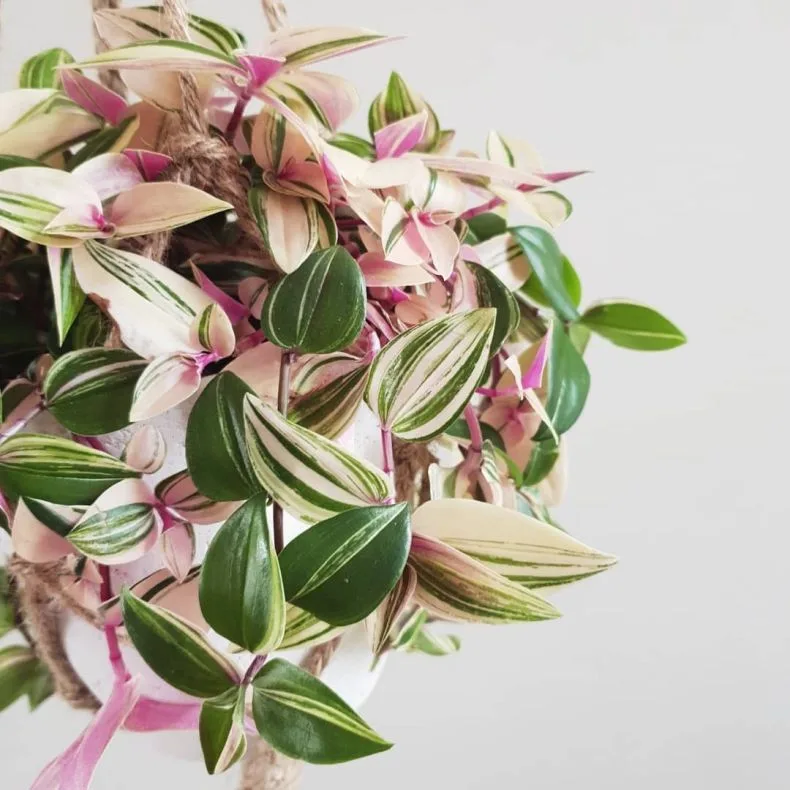
Unraveling Pests and Diseases
Most common pests and diseases
When growing Wandering Jew, it is crucial to be aware of the potential threats to the plant’s health. The main ones include:
- Mites: Small arachnids that cause spots on the leaves.
- Mealybugs: Sucking insects that leave a sticky substance on the leaves.
- Fungi: These can appear due to excess humidity, resulting in spots and deformities on the leaves.
Common problems and their solutions
- Yellowing leaves:
- Cause: Excess water.
- Solution: Reduce watering and make sure the soil allows adequate drainage.
- Withering:
- Cause: Lack of water.
- Solution: Adjust the watering pattern, keeping the soil slightly damp.
- Leaf spots:
- Cause: Excessive sun exposure.
- Solution: Move the plant to a place with indirect light.
- Pest attack:
- Cause: Infestation by mites, mealybugs, etc.
- Solution: Use natural insecticides or insecticidal soap and remove pests by hand when possible.
Keeping an eye out for signs of infestation and acting quickly with the right solutions will help preserve the health and beauty of your Wandering Jew.
Unraveling Pests and Diseases
Most common pests and diseases:
When growing Wandering Jew, it is crucial to be aware of the potential threats to the plant’s health. The main ones include:
- Mites: Small arachnids that cause spots on the leaves.
- Mealybugs: Sucking insects that leave a sticky substance on the leaves.
- Fungi: These can appear due to excess humidity, resulting in spots and deformities on the leaves.
Common problems and their solutions
- Yellowing leaves:
- Cause: Excess water.
- Solution: Reduce watering and make sure the soil allows adequate drainage.
- Withering:
- Cause: Lack of water.
- Solution: Adjust the watering pattern, keeping the soil slightly moist.
- Leaf spots:
- Cause: Excessive sun exposure.
- Solution: Move the plant to a place with indirect light.
- Pest attack:
- Cause: Infestation by mites, mealybugs, etc.
- Solution: Use natural insecticides or insecticidal soap and remove pests by hand when possible.
Keeping an eye out for signs of infestation and acting quickly with the right solutions will help preserve the health and beauty of your Wandering Jew.
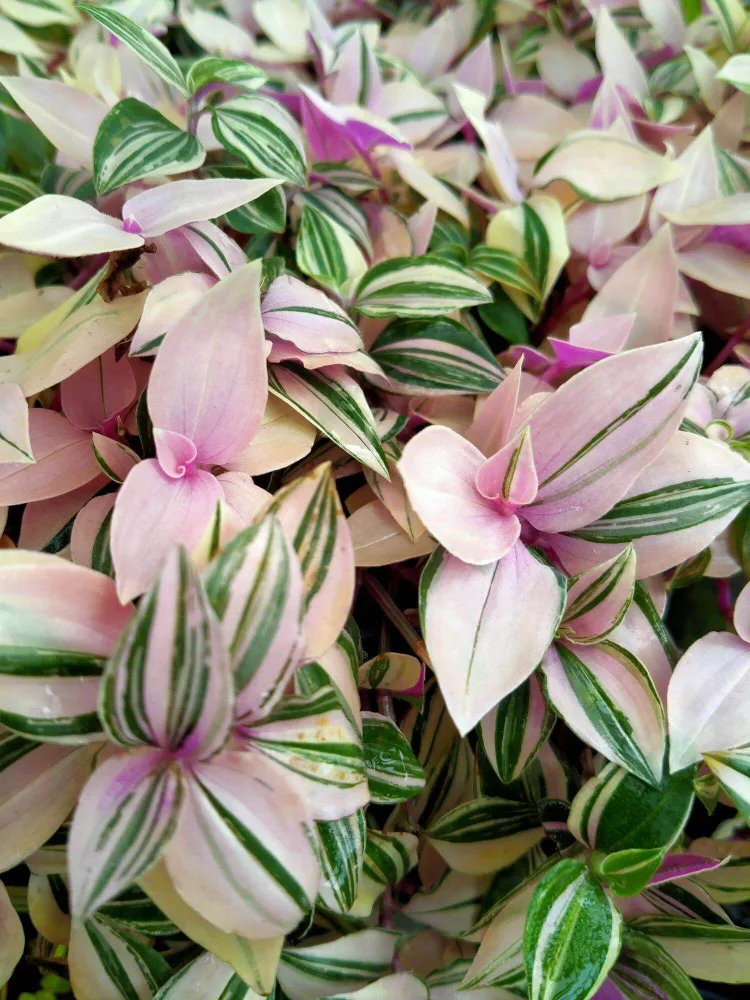
Uncovering Curiosities and Myths
Discover fascinating facts and intriguing myths about Wandering Jew that add a special layer to your experience as a grower:
Curiosities
- Brazilian Origins:
- Wandering Jew is native to Brazil, thriving in tropical and subtropical environments.
- Popular Names:
- Also known as “Amor Agarradinho” because of its ability to spread easily.
- Attractive Varieties:
- In addition to the green variety, there are colorful types such as ‘Tricolor’ and ‘Quadricolor’, adding a vibrant palette.
- Use in folk medicine:
- In some cultures, Wandering Jew is used in folk medicine to treat skin problems and inflammation.
Myths
- Myth of uncontrolled invasion:
- Although it is prolific, the idea that it takes over quickly is exaggerated. With proper management, they are a lovely addition to the garden.
- Myth of Extreme Toxicity:
- Considered mildly toxic, Wandering Jew is not as dangerous as some myths suggest. However, precautions should be taken with pets.
Exploring these curiosities and debunking myths contributes to a deeper appreciation of Wandering Jew in its natural and cultural context.
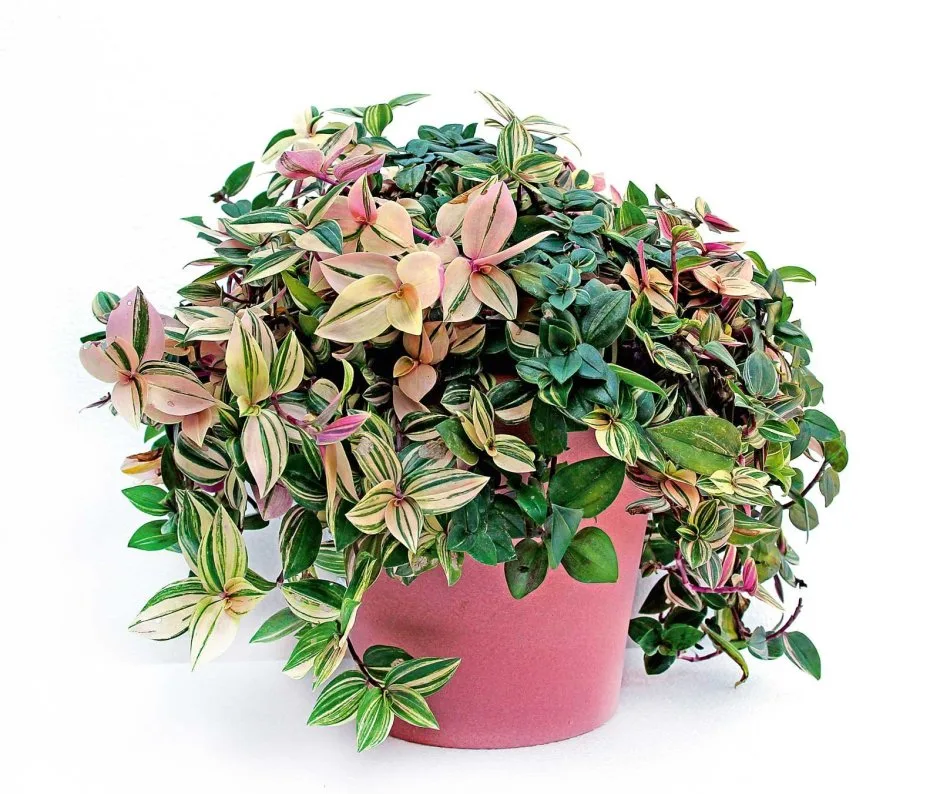
Conclusion
Throughout this article, we have delved into the fascinating universe of Wandering Jew, revealing its Brazilian origins, colorful variations and even its role in folk medicine. Its versatility as an ornamental plant stands out, making it a popular choice for those who want a touch of exuberance in their green spaces.
In addition, we debunk some myths, highlighting that, with the right care, Wandering Jew is a charming and manageable addition to gardens and interiors. By appreciating its curiosities and understanding how to deal with challenges such as pests and diseases, plant lovers can cultivate this unique species with confidence. In short, Wandering Jew, with its captivating beauty and resilience, continues to delight and enrich our environments in surprising ways.
Frequently Asked Questions
What are the benefits of the Wandering Jew?
Benefits of the Wandering Jew: The Wandering Jew, also known as Tradescantia fluminensis, offers various benefits for health and well-being. Its medicinal properties stand out, including its ability to relieve inflammation on the skin, contribute to the treatment of burns and have healing potential.
What is Tradescantia fluminensis used for?
What Tradescantia fluminensis is used for: Tradescantia fluminensis is valued for its many uses, mainly as an ornamental and medicinal plant. Its applications include:
Landscape Decoration: Used in gardens and indoor spaces due to its beauty and ease of cultivation.
Medicinal Properties: Used in folk medicine to treat skin problems and provide relief in cases of burns.
What is Wandering Jew?
Wandering Jew is a term associated with Tradescantia fluminensis, a succulent plant commonly known as “Wandering Jew”. This species is recognized for its attractive green leaves and is cultivated for its decorative and medicinal properties in various tropical and subtropical regions.


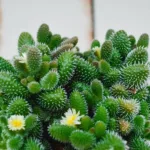
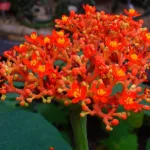
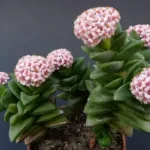
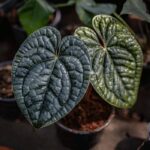
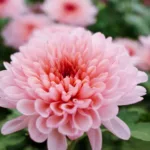
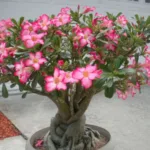
excellent publish, very informative. I ponder why the other specialists of this sector don’t understand
this. You must continue your writing. I’m sure, you have
a great readers’ base already!